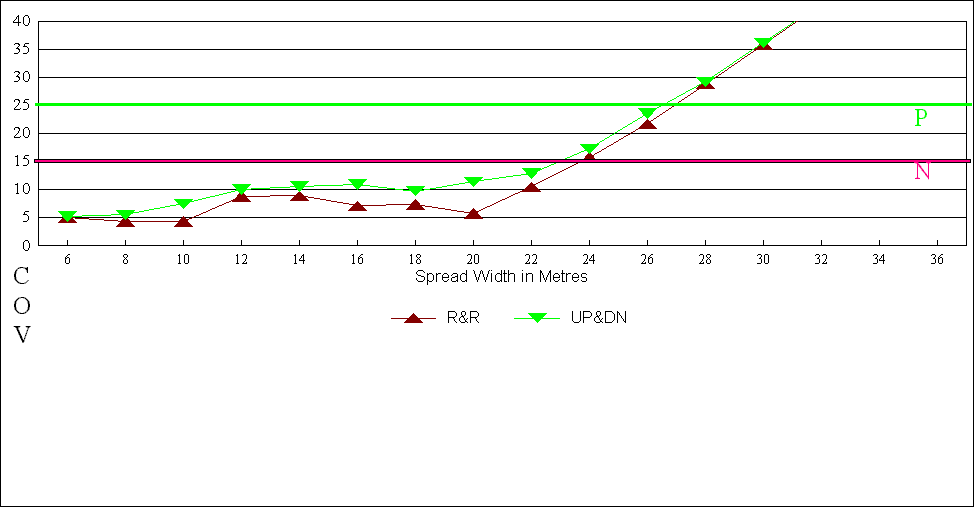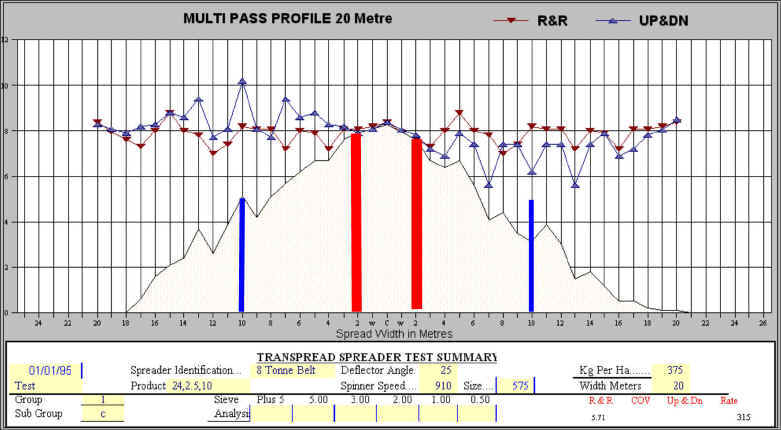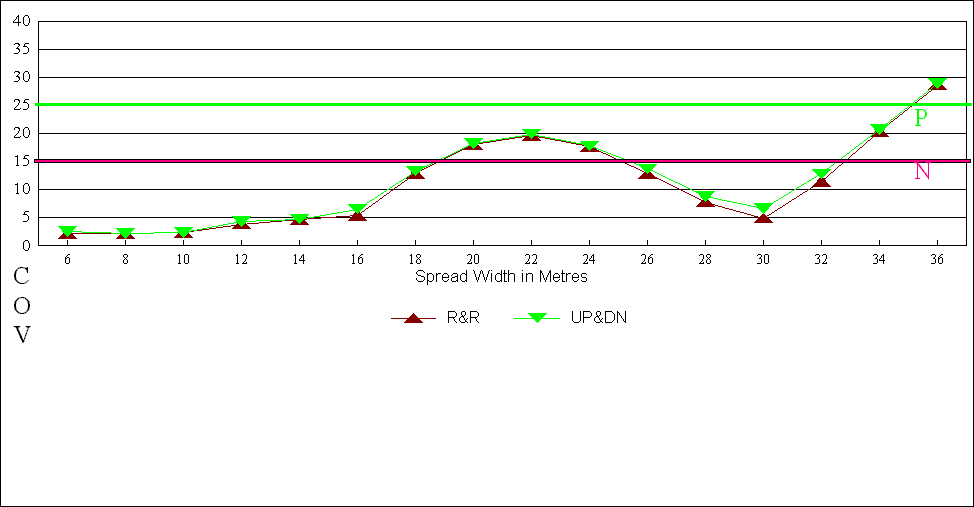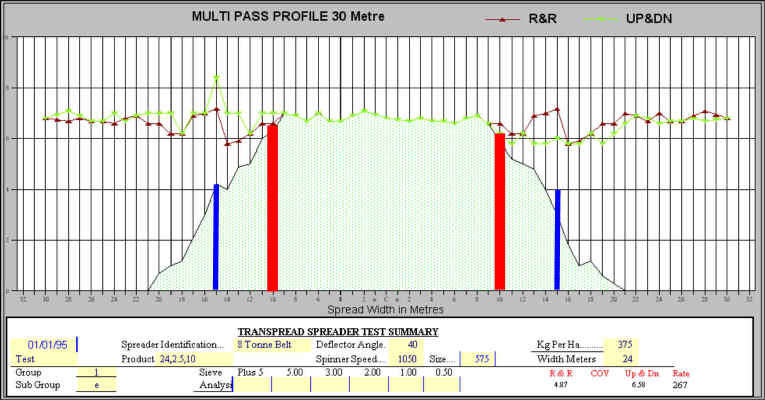|
|
Ecological Spread Patterns |
Transpread has done a lot of work to get spread patterns that are ecologically friendly and do not waste fertiliser in hedge rows and waterways etc.
The main loss to farmers in spreading is often the loss around the edge of the field through not getting the full rate to the edge, not as many suppose from poor spreading inside the field.
Below is a spread pattern favored by the present testing regimes and would be given a spread width of 20mtr. Each pass is overlapped at the BLUE lines. The problem with this is to get the full rate to the edge of the field you have to drive only 2mtr. from the edge of the field this puts all material to the left and right of the RED line outside the field, in waterways etc. To not put the full rate to the edge of the field in a cropping situation can result in large crop losses. In reality this pattern would need to be run at 4mtr. from the boundary putting all the rest through into waste land and waterways, several times more than the next patterns.


The pattern shown below is from the same spreader on the same product but set for maximum spread width to save compaction and crop damage. The over lap is again at blue with full rate application from the center up to the red lines. Vastly less outside full rate area. In reality you would probably run this pattern 14mtr. from the boundary as you usually accept slightly less at the borders. This is then putting very little outside the boundary.


This pattern will give Council and Water Boards what they are requiring while maximizing profit to the Farmer. Spreader operators have to drive more accurately and in some cases will have to use driving aids such as foam markers or GPS, but will gain considerably by not so many rounds of the field.
Countries that have embraced Precision Farming with Site Specific Agriculture using GPS and variable rate require the full rate to the edge of the field with as little as possible going into waste land or water. The above type pattern is the only one that will give it. The only one that will meet Council requirements.
There is usually more loss of production through not getting the full rate to the edge of a field than uneven spreading inside the field.